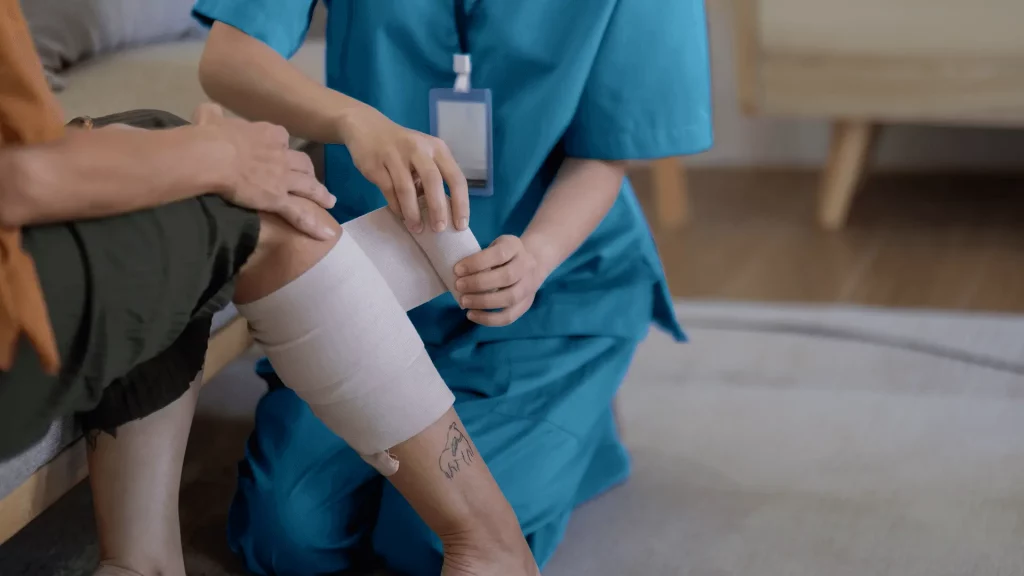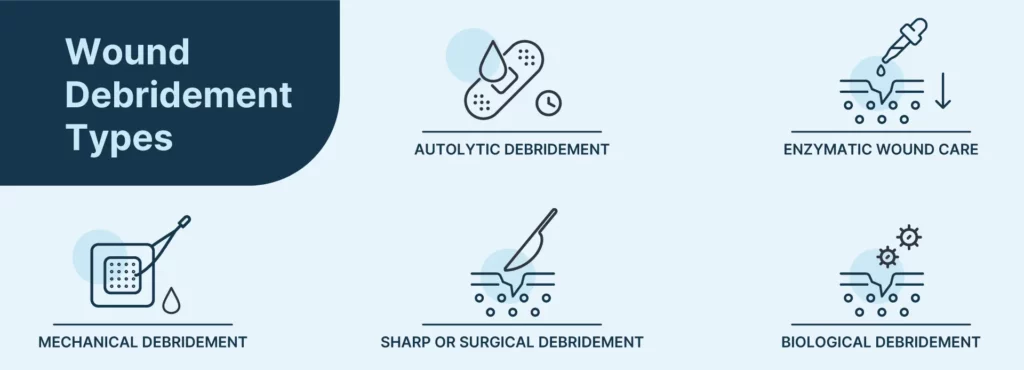
Effective wound management is critical in skilled nursing and assisted living facilities, particularly in reducing complications, improving resident quality of life, and aligning with reimbursement goals. One of the most essential components of wound healing is proper debridement—the removal of dead or infected tissue to promote the regeneration of healthy tissue. However, determining the most appropriate wound debridement type for each resident can be complex. This is where mobile wound care services bring exceptional value to facilities. in the Sacramento area and beyond.
Why Wound Debridement Matters
Wound debridement plays a central role in healing chronic wounds such as pressure injuries, diabetic ulcers, venous leg ulcers, and post-surgical complications. Without timely and appropriate debridement, wounds can become infected, delay in healing, and increase hospitalization risk.
According to a study, appropriate and consistent debridement is associated with faster healing, particularly when performed regularly and by specialized providers.
Understanding Wound Debridement Types

Selecting the right debridement technique is not a one-size-fits-all decision. The method should align with the resident’s clinical condition, wound type, and care setting.
Autolytic Debridement in SNF Settings
This method uses the body’s natural enzymes and moisture to break down necrotic tissue. It is non-invasive and suitable for medically stable residents, though it may take longer to show results. This approach works well in lower-risk wounds but requires consistent dressing changes and monitoring.
Enzymatic Wound Care
Topical agents dissolve devitalized tissue and are particularly effective when surgical options are not appropriate. Enzymatic wound care offers a balance between non-invasiveness and clinical effectiveness, especially for residents with multiple comorbidities.
Mechanical Debridement
A more traditional technique involving wet-to-dry dressings or irrigation, mechanical debridement is cost-effective but may be less precise. Pain and potential trauma to viable tissue limit its use to specific clinical scenarios.
Sharp or Surgical Debridement
This method involves using scalpels or scissors to remove dead tissue quickly. It is the fastest and most selective method and is ideal for infected or rapidly deteriorating wounds. However, it requires advanced clinical expertise and should be performed by trained wound care professionals.
Biological Debridement
This technique uses sterile maggots to consume necrotic tissue. While rare, it remains a viable option for certain non-healing wounds where other methods have failed.
The Role of Mobile Wound Care in Debridement Success
Mobile wound care teams bring advanced wound care expertise directly to your facility, eliminating the need to transport vulnerable residents to outside appointments. This model ensures:
- Timely Debridement
Mobile clinicians can evaluate and debride wounds during early stages, preventing further complications. - Tailored Clinical Care
Each resident receives an individualized plan that considers the most effective debridement type for their specific needs. - Reduced Hospitalizations
On-site wound management lowers the risk of hospital-acquired infections and reduces unnecessary ER transfers. - Compliance and Documentation
Expert mobile wound care teams align with Medicare and value-based care models by ensuring thorough documentation, consistent care, and measurable outcomes.
Frequently Asked Questions on Wound Debriment
How quickly can mobile wound care teams respond?
Most providers offer evaluations within 24 to 48 hours, with urgent care available for infected or rapidly deteriorating wounds.
Are services covered by Medicare or insurance?
Yes, most wound care services are covered under Medicare Part B or private insurance plans, especially when medically necessary.
What types of wounds can be treated?
Mobile teams manage a wide range of wounds including pressure injuries, diabetic foot ulcers, surgical wounds, venous ulcers, and arterial wounds.
How do we integrate mobile wound care into our workflow?
Teams coordinate directly with facility nursing staff and medical directors. Documentation is entered into your EMR, ensuring seamless communication and compliance.
Contact us today to schedule your assessment and learn how mobile wound care can transform your clinical outcomes.
References:
Wilcox, James R et al. “Frequency of debridements and time to heal: a retrospective cohort study of 312 744 wounds.” JAMA dermatology vol. 149,9 (2013): 1050-8. doi:10.1001/jamadermatol.2013.4960
